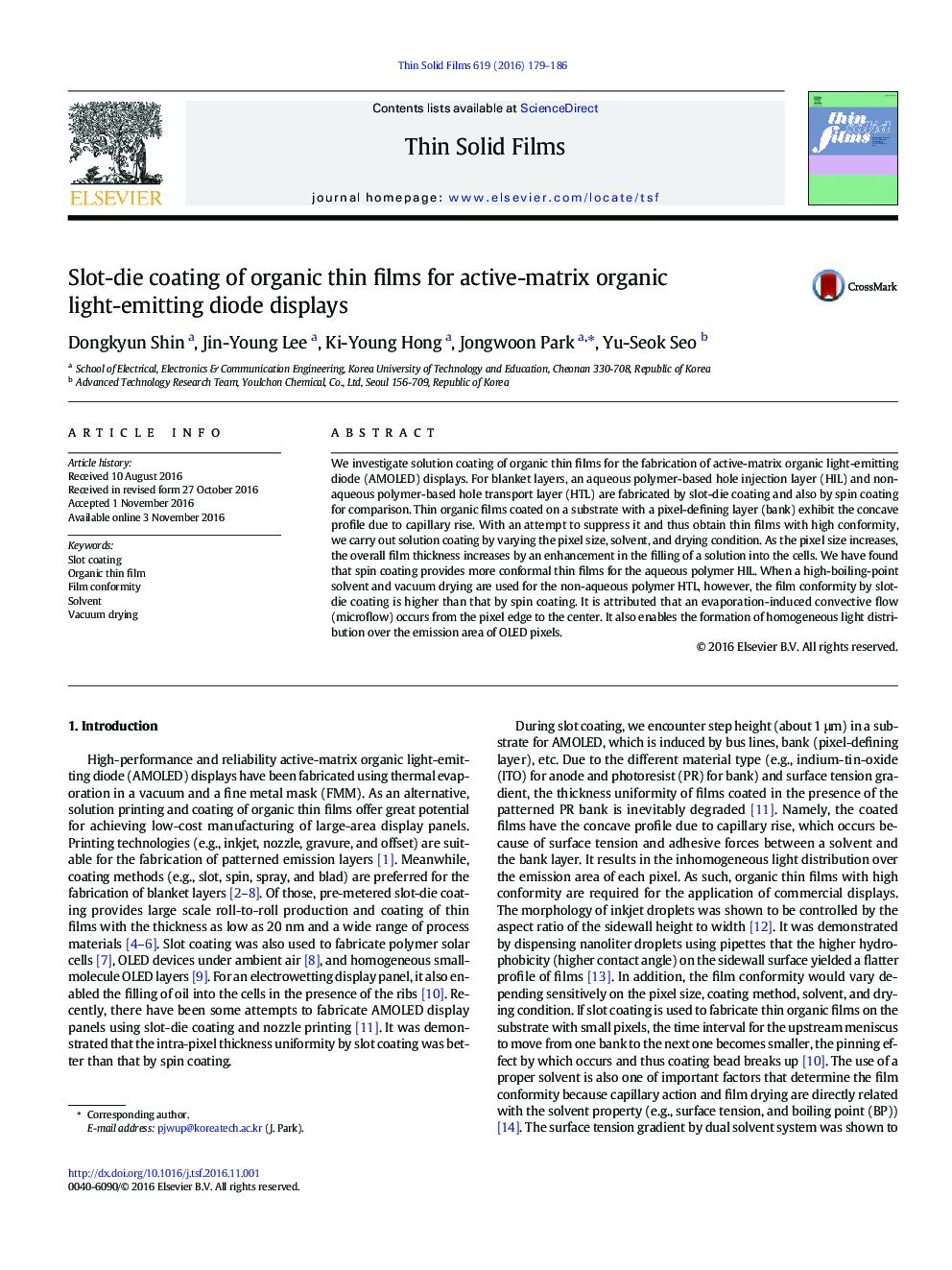| Article ID | Journal | Published Year | Pages | File Type |
|---|---|---|---|---|
| 5466497 | Thin Solid Films | 2016 | 8 Pages |
Abstract
We investigate solution coating of organic thin films for the fabrication of active-matrix organic light-emitting diode (AMOLED) displays. For blanket layers, an aqueous polymer-based hole injection layer (HIL) and non-aqueous polymer-based hole transport layer (HTL) are fabricated by slot-die coating and also by spin coating for comparison. Thin organic films coated on a substrate with a pixel-defining layer (bank) exhibit the concave profile due to capillary rise. With an attempt to suppress it and thus obtain thin films with high conformity, we carry out solution coating by varying the pixel size, solvent, and drying condition. As the pixel size increases, the overall film thickness increases by an enhancement in the filling of a solution into the cells. We have found that spin coating provides more conformal thin films for the aqueous polymer HIL. When a high-boiling-point solvent and vacuum drying are used for the non-aqueous polymer HTL, however, the film conformity by slot-die coating is higher than that by spin coating. It is attributed that an evaporation-induced convective flow (microflow) occurs from the pixel edge to the center. It also enables the formation of homogeneous light distribution over the emission area of OLED pixels.
Related Topics
Physical Sciences and Engineering
Materials Science
Nanotechnology
Authors
Dongkyun Shin, Jin-Young Lee, Ki-Young Hong, Jongwoon Park, Yu-Seok Seo,
